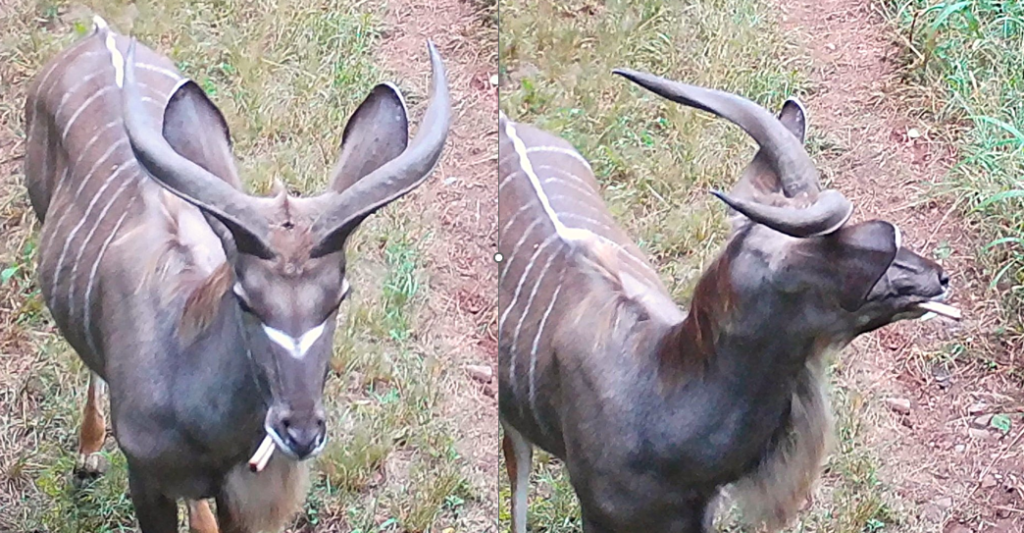
Young kudu bull gnawing on bone
Ungulates such as kudus typically obtain calcium and phosphorus from browsing vegetation. However, they are also known to supplement their mineral intake by chewing and sucking on bones, and occasionally horns, a behaviour known as osteophagia. This intriguing practice has been observed in a variety of non-carnivorous animals, including reindeer, camels, giraffes, impalas, wildebeest, porcupines and even tortoises. And a young kudu bull was recently photographed by a Mountainlands trail camera gnawing on a bone as if it was a cigar.
Can the rumen fluid of ungulates, which is designed for the digestion of browse actually digest bone once it’s swallowed? Scientists wanted an answer. A 2008 study published in the Onderstepoort Journal of Veterinary Research tested this by immersing bone samples in the rumens of five sheep for up to 30 days, comparing the effects to immersion in distilled water and artificial saliva. The study concluded that while rumen fluid and saliva could soften the bones, actual digestion within the rumen was minimal. And there are accounts of small pieces of bone being found in the dung of ungulates.
Despite its benefits, osteophagia carries risks. Chewing bones can lead to dental fractures and excessive tooth wear, potentially skewing assessments of an animal’s age and health. Nevertheless, this behaviour highlights the ecological adaptability of species like the kudu, as they exploit overlooked resources to meet their nutritional needs.

